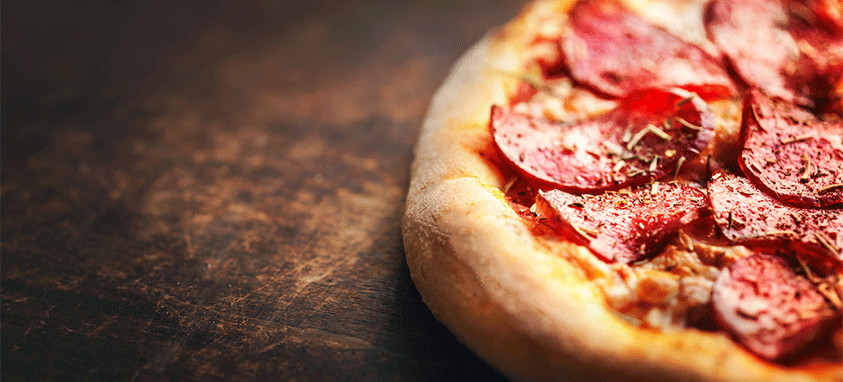Chicago is a diverse, multi-layered city. You can see the complexity in its neighborhoods, its mix of blue, white and open-collar businesses—and its pizza. One way to experience all of these nuances is to take a walking tour of pizza joints designed by professional foodie Steve Dolinsky, author of the soon-to-be released Pizza City, USA: 101 Reasons Why Chicago Is America’s Greatest Pizza Town.
On the three-hour West Loop Pizza Walk alone, participants try four completely different styles of pizza while getting a closer look at a neighborhood quickly transforming from industrial brick to celebrity-chef-driven residential and tech haven. At the same time, they could learn something about themselves and their fellow walkers as they sample, amble and compare notes about the best way to consume the meal: knife and fork or three-finger fold?
Before you go, you might want to brush up on some of the most common Chicago pizza styles. Spoiler alert: Chicago is a thin-crust town according to Dolinsky. The most popular crust orientation is tavern-style, thin, square-cut as opposed to round, deep-dish. For more surprises, descriptions and destinations, see below.
Deep Dish
Legend has it that deep-dish, stuffed pizza was invented at Chicago’s Pizzeria Uno in the 1950s. Today, it is baked in a metal cake pan with a crust often including corn meal and/or butter. At the 52 Lou Malnati’s Pizzeria locations in town, layers of tomato sauce, mozzarella cheese and sausage cover the pie for the perfect Optimal Bite Ratio (OBR), as Dolinsky describes it.
Tavern-Style
Another pie with old Chicago roots is a crispy, cracker-thin pizza said to have originated on the south-side when pubs started serving squares of it to workers to keep them drinking. At Pat’s Pizzeria & Ristorante, which is run by generations of men named Nick, you can create your own version of this classic.
Neapolitan
When you are hankering for a traditional Neapolitan pie, the magic is in the details. The crust recipe handed down over a hundred years is a precise mix of flour, yeast, salt and water exposed to burning temperatures to form a spotted ring of bread delivery for the finest toppings. Neapolitan-certified Forno Rosso Pizzeria Napoletana delivers with signature disks baked for 90 seconds in a domed, wood-burning oven imported from Italy. Specially-trained chefs sear the delicacy at heats of up to 900 degrees. And while the classic margherita, which proudly flies the colors of its Italian heritage (red tomato sauce, white mozzarella and green basil), is always a favorite, feel free to get creative with tartufo (a white pizza with a black truffle paste base) or carbonara with fried egg and pancetta.
Roman
With Roman-style pizza, where olive oil, yeast and even sugar are added to the dough to give it a crunch, almost anything goes. In fact, at Bonci, which employs the pizza al taglio (pizza for cutting or pizza by the slice) method, the colorful, half-baked rectangles are displayed behind glass, resembling a gelato case with their bright colors and creative flavors. Guests can choose from meatball, zucchini-lemon-ricotta, squid or a dozen other varieties and then bakers cut off as much as they want with scissors and crisp it in the wall of ovens before serving it hot and fresh minutes later.
Sicilian
Pizza built on a thicker, rectangular crust in the Old World came to be known in the United States for its island roots in Sicily. At Nonna’s Pizza and Sandwiches, which is tucked behind the upscale Formento’s restaurant, the focaccia-like crust is made in a coal-burning oven and topped with a slightly spicy sauce perfect for topping with pepperoni or artichoke and black olives—and served by the slice.




